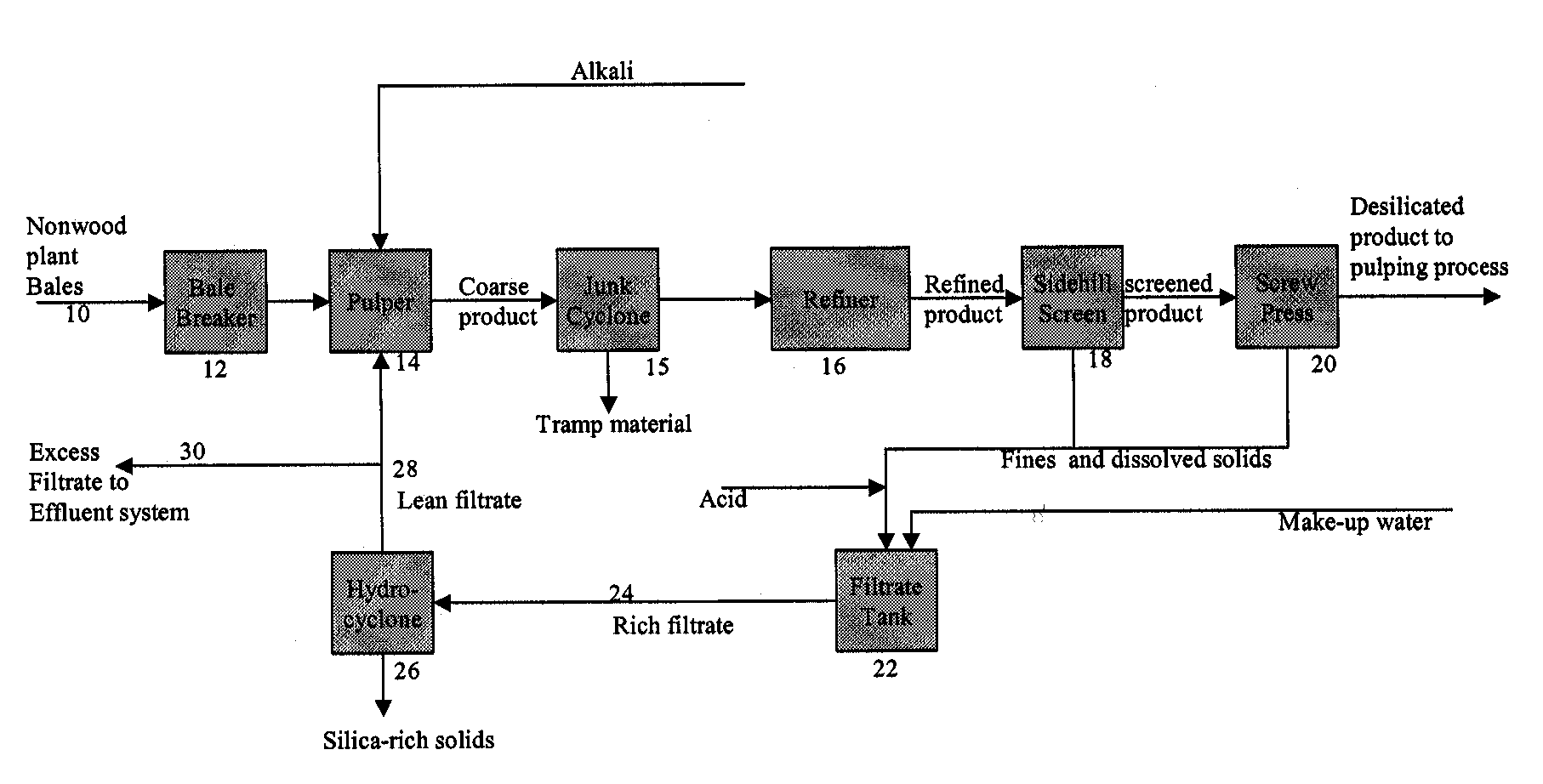Chemimechanical desilication of nonwood plant materials
a non-wood plant material, chemimechanical technology, applied in the field of chemimechanical desilication of non-wood plant materials, can solve the problems of increased cleaning time, inefficient operation, and difficulty in recovering cooking chemicals from spent cooking liquor
- Summary
- Abstract
- Description
- Claims
- Application Information
AI Technical Summary
Problems solved by technology
Method used
Image
Examples
Embodiment Construction
[0016] The present invention provides for a method of desilicating material from nonwood plant fibre sources. When describing the present invention, all terms not defined herein have their common art-recognized meanings.
[0017] As used herein, the term “nonwood plant fiber” refers to lignocellulosic material which is not derived from wood plants. Nonwood plant fiber sources include, but are not limited to, agricultural residual materials, annual and perennial grasses, and annually harvested fiber crops. Examples of agricultural residuals include wheat straw, rice straw, barley straw, oat straw, corn stover, sugar cane bagasse, oilseed flax straw, and oilseed hemp straw. Examples of annual and perennial grasses include reed canary grass, rye grass, reed grass, switchgrass, and fescue. Examples of annually harvested fiber crops include fiber flax, fiber hemp and kenaf.
[0018] In one embodiment, the invention comprises a pre-pulping process, which may be followed by acid treatment and ...
PUM
| Property | Measurement | Unit |
|---|---|---|
| temperature | aaaaa | aaaaa |
| temperature | aaaaa | aaaaa |
| temperature | aaaaa | aaaaa |
Abstract
Description
Claims
Application Information
 Login to View More
Login to View More - R&D
- Intellectual Property
- Life Sciences
- Materials
- Tech Scout
- Unparalleled Data Quality
- Higher Quality Content
- 60% Fewer Hallucinations
Browse by: Latest US Patents, China's latest patents, Technical Efficacy Thesaurus, Application Domain, Technology Topic, Popular Technical Reports.
© 2025 PatSnap. All rights reserved.Legal|Privacy policy|Modern Slavery Act Transparency Statement|Sitemap|About US| Contact US: help@patsnap.com


